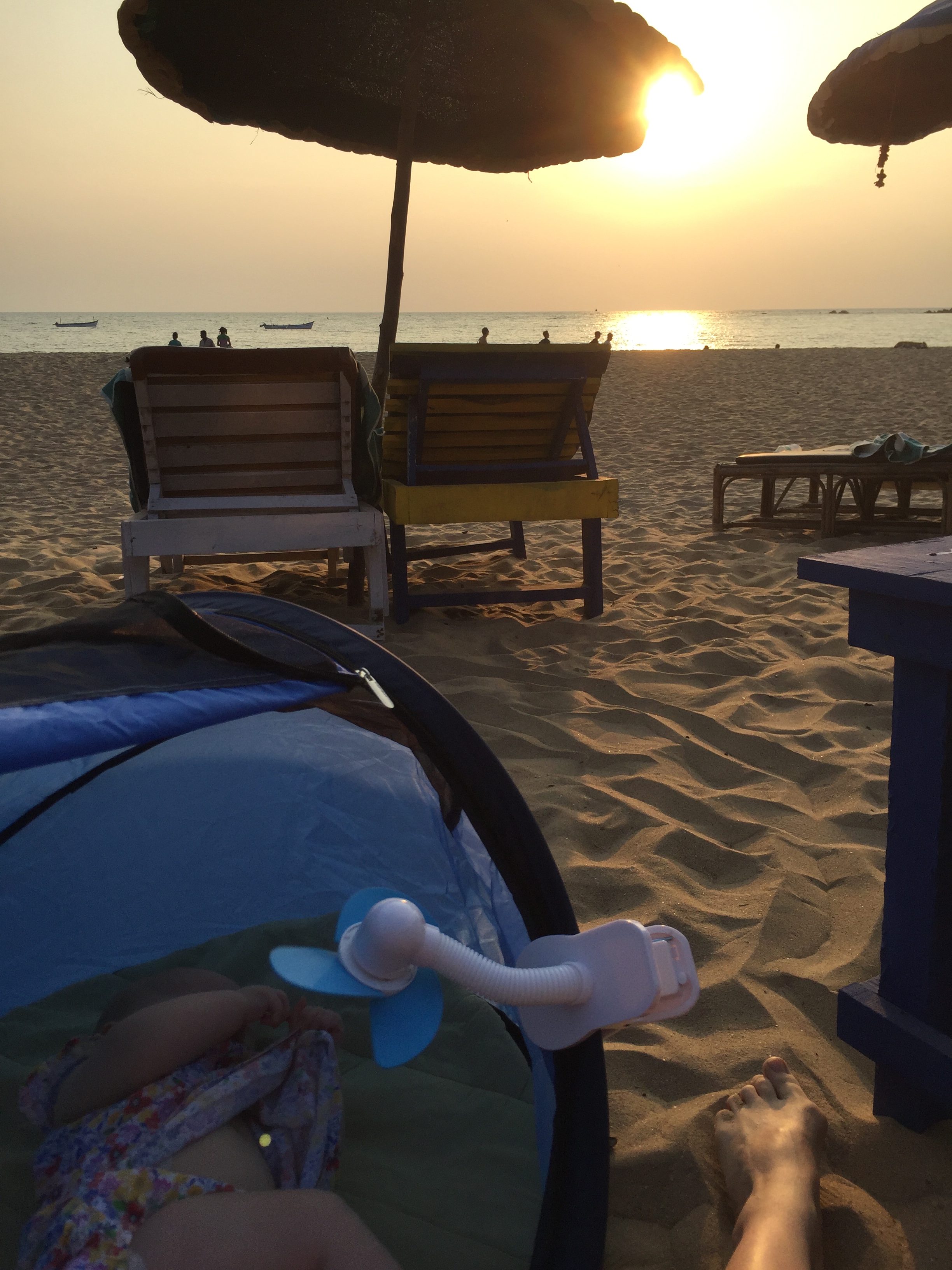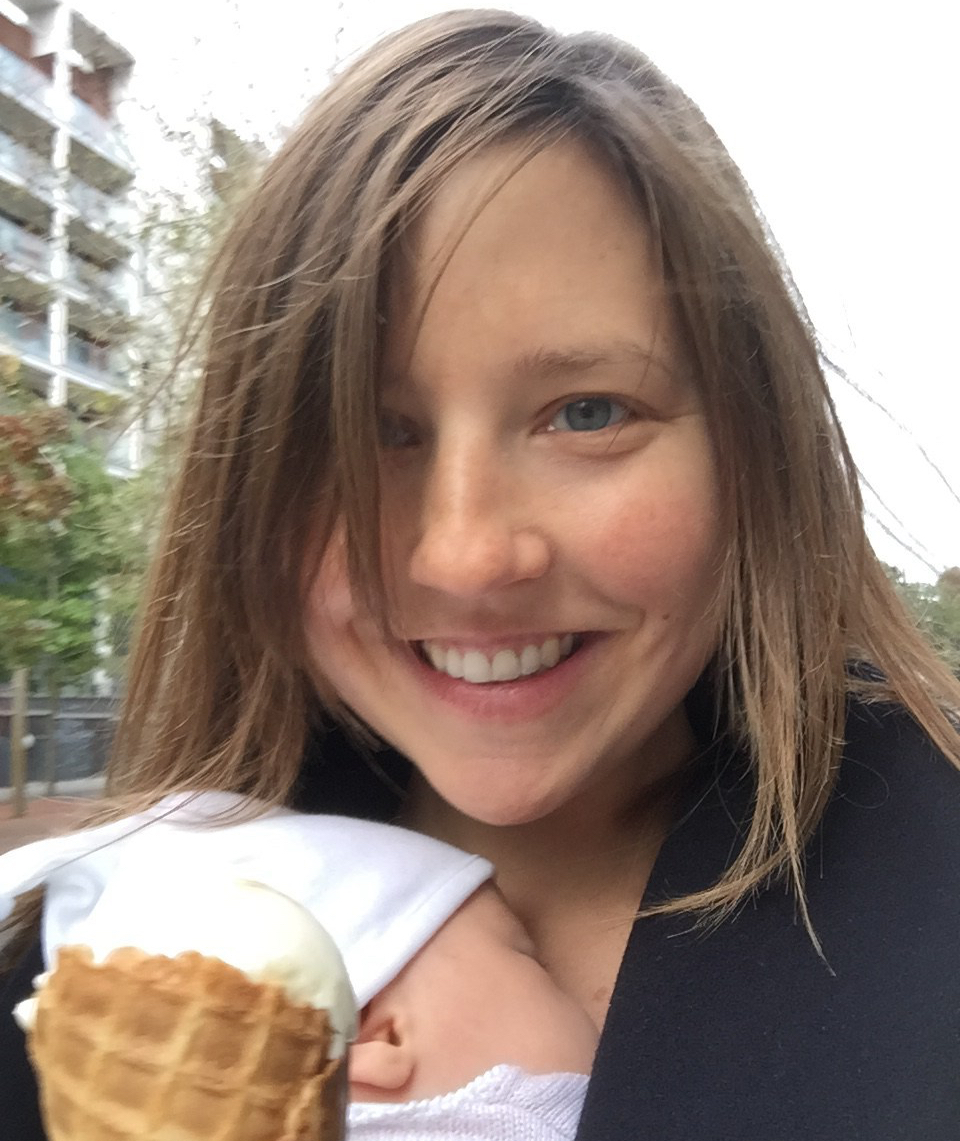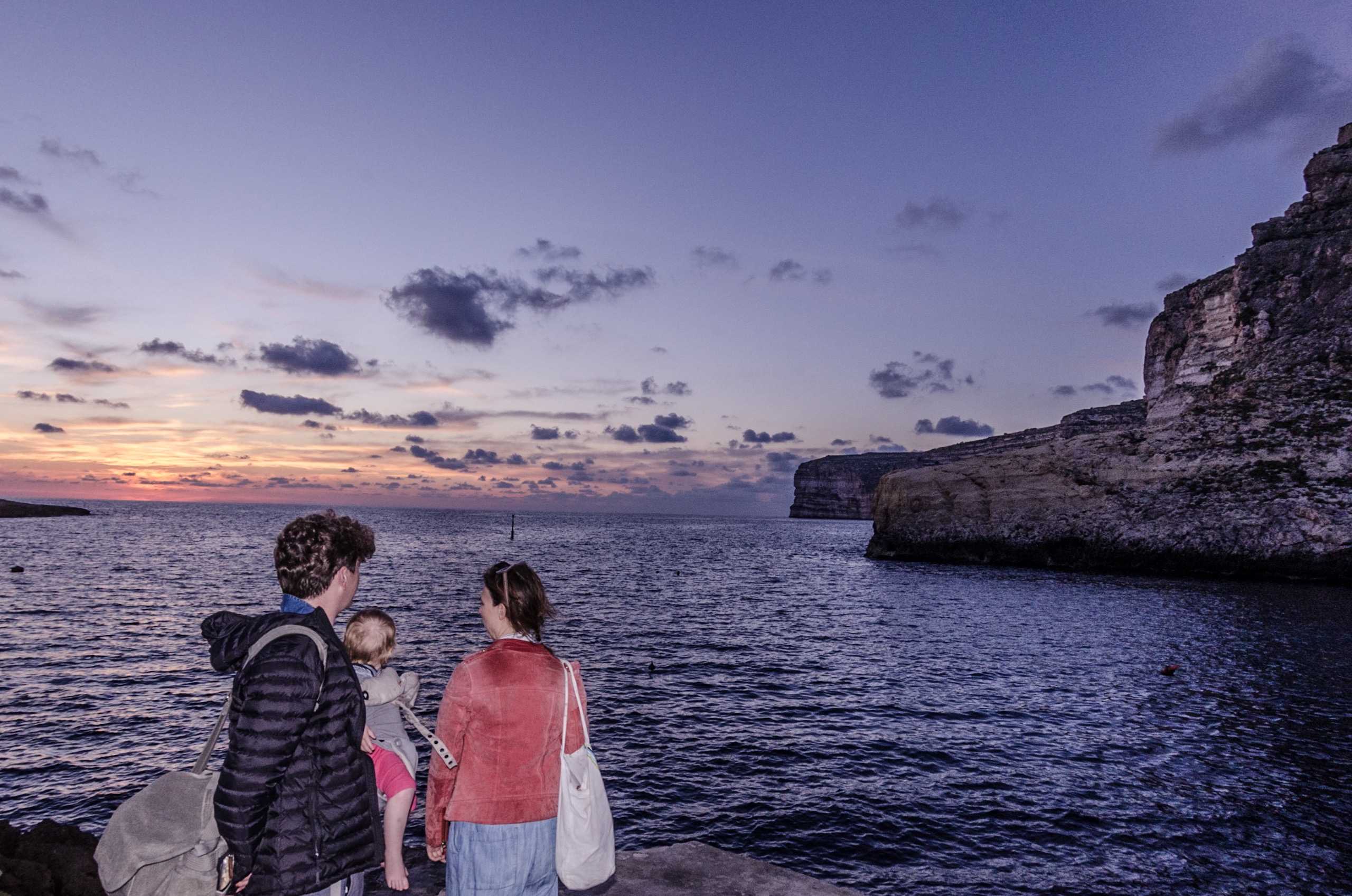 The sooner you start flying with your baby, the easier it is. You probably spend most of your time with your newborn in your arms anyway, so the fact that you’re on a plane is almost irrelevant. The chief challenge of flying with babies is keeping them entertained and newborns don’t require much in that regard, so if you have the opportunity to go abroad with your baby when she’s still very little, go for it. The other benefit to starting when she’s small is that it’s good practice for flying with her when she’s bigger and more aware of her surroundings: she’ll already be familiar with the strange environment of an aeroplane, you’ll be more confident and you’ll both have a better experience as a result.
The sooner you start flying with your baby, the easier it is. You probably spend most of your time with your newborn in your arms anyway, so the fact that you’re on a plane is almost irrelevant. The chief challenge of flying with babies is keeping them entertained and newborns don’t require much in that regard, so if you have the opportunity to go abroad with your baby when she’s still very little, go for it. The other benefit to starting when she’s small is that it’s good practice for flying with her when she’s bigger and more aware of her surroundings: she’ll already be familiar with the strange environment of an aeroplane, you’ll be more confident and you’ll both have a better experience as a result.
This post only covers flying itself, but I’ve written about airports and airport transfers too, plus documents for travelling with children, buying travel insurance and applying for a passport for your child. I’ll be covering booking flights soon – sign up to the Baby Adventuring mailing list so you don’t miss it.
Feeding
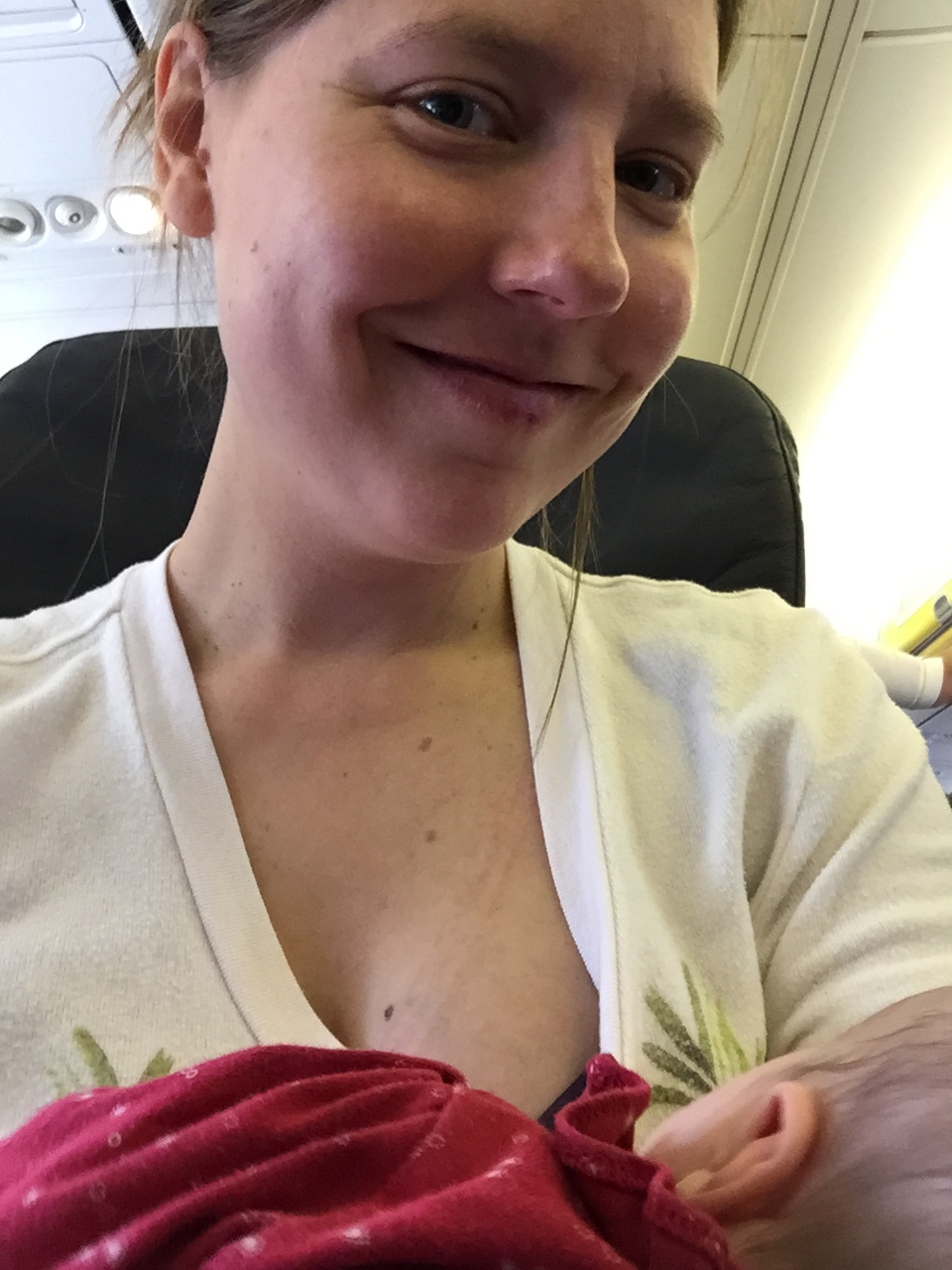
Take more food and milk than you think you might need – that way you’ll covered in case of delays, and will have plenty of snacks to hand that can serve as distractions at otherwise tedious or challenging moments. (We spend a lot of time walking up and down the plane with the baby girl, either carrying her or keeping a close eye as she toddles along, but when the fasten seatbelt sign is on and she’s not happy about staying put, a handful of baby rice cakes can be very handy indeed.)
Breastfeeding mothers might find themselves feeding more frequently and for longer than usual on flights, which can be exhausting, particularly at night, when you’ll be getting even less sleep than usual. Make sure you’ve got plenty of snacks for yourself, and that you’re drinking enough water. Some extra nursing pads might come in handy too. If you’re bottlefeeding, ready-mixed formula is much more convenient than making it up as you go. Bring enough sterilised bottles to last the duration of your flight, plus a couple of extras in case of delays. Extra muslin squares are a good idea whether you’re breast or bottle-feeding.
I’ve found that our feeding routine goes out the window when we’re flying, along with sleep routines (see below) – there are just too many distractions to contend with and it’s impossible to time things properly when you’re dealing with security, boarding, etc. So we try to go with the flow and offer the baby girl healthy snacks fairly often to make sure she’s getting enough to eat. For toddlers and babies over the age of six months, chopped cucumber and carrots, dried and fresh fruit, crackers, sandwiches and travel pouches of baby food are all easy options. You can put them in resealable sandwich bags, but we like to take mini Tupperware containers from home away with us, as they come in handy for snacks and meals on the go throughout the trip too.
Toys
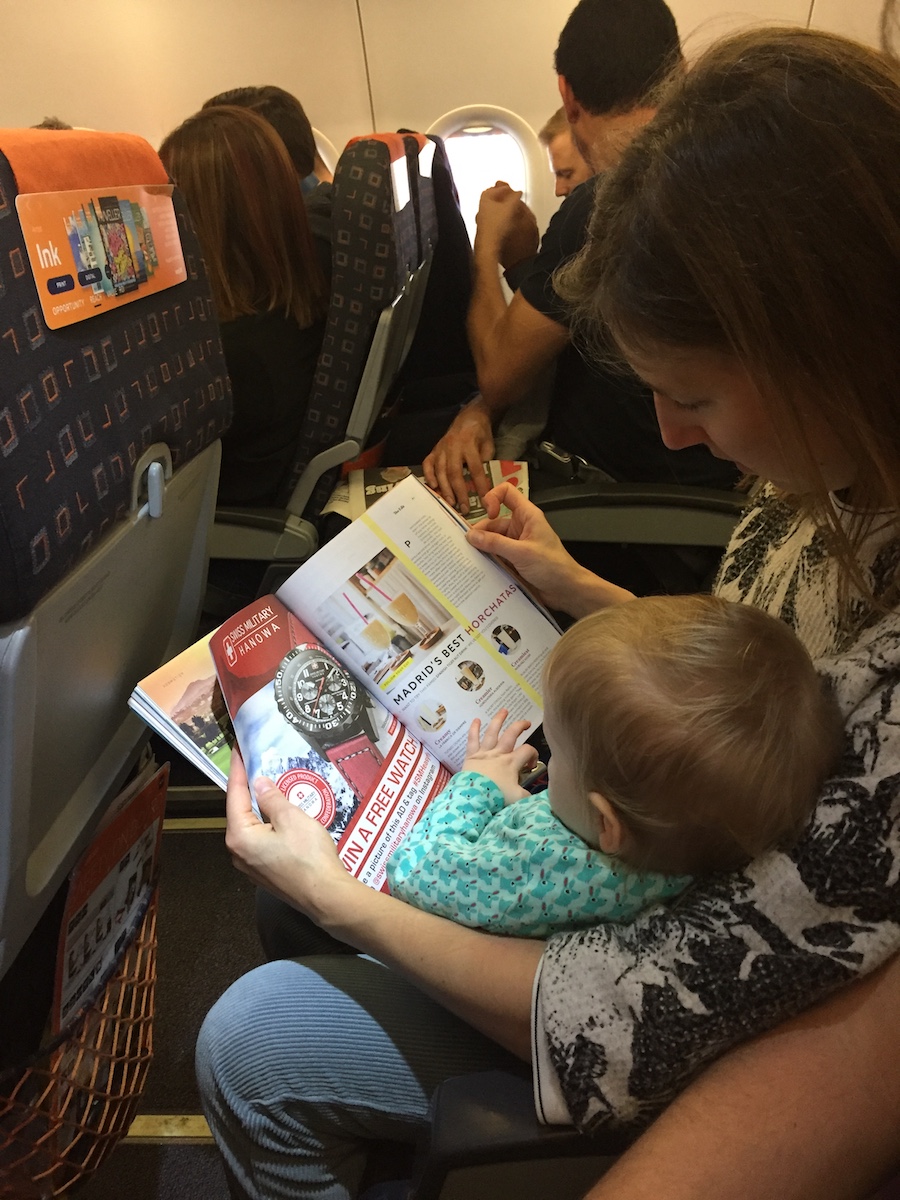
The longer the flight, the more entertainment you’ll require, so pack as many small, non-noisy toys as you can reasonably fit into your carry-on. It may seem like overkill when you’re packing, but you won’t regret having a plentiful supply. A favourite soft toy or two is a good idea, as are lift-the-flap books, colouring-in book and crayons, stickers and toy cars. A ‘stunt wallet’ filled with a few membership and loyalty cards that I don’t mind losing can keep the baby girl absorbed for ages. We always have fun with the inflight magazines too.
A friend always wraps several small presents ahead of flights with her kids, which she saves for moments when they’re getting antsy. The novelty of the present keeps them busy and the upwrapping is exciting in itself. I haven’t actually tried it yet, as the baby girl isn’t all that interested in unwrapping yet, but I’m planning to give it a go the next time we fly.
Crying
You could bring all the snacks and toys in the world and your baby will still probably kick off at some stage during the flight. It’s no fun dealing with a crying baby on a plane, but try to remember that your fellow passengers are more likely to be feeling sympathetic than annoyed – chances are that most of them have been in the same position at some stage. Only a real jerk could get angry with a parent clearly doing their best to calm their baby, and life’s too short to waste time worrying about what the jerks of this world think of you. Also bear in mind that the noise of the engines muffles the crying for those sitting even just a couple of rows away from you, so it’s probably not as bad as you think.
We’re lucky in that the baby girl has never been a big crier – if she cries, it’s usually for a reason, and it’s just a matter of working out what that reason is and coming up with a solution. (It’s a different story now that she’s started throwing tantrums, but more on that later.) Teething is always very challenging, and affects her feeding too, so we always travel with Calpol, infant Nurofen and teething gel. Earache while flying hasn’t been a problem for the baby girl but troubles lots of babies and toddlers: swallowing equalises pressure in the ears so try to get your little one to breastfeed, eat or drink during takeoff and landing. Walking around can be a good distraction – make sure you’ve got a sling with you to take the pressure of your arms and back.
If nothing does the trick to stop the crying, take her into the toilet for a few minutes. The quiet and privacy might calm her down, and even if it doesn’t, being away from other passengers, even briefly, might calm you down so you’re better able to go back out there and deal with it. This can work for toddler tantrums too, if you’re able to physically manoeuvre your child. If not, employ distractions in turn until something works (see toys and snacks above).
Where to sit

Children under the age of two can travel for (almost) free on most airlines if sitting on your lap, though you can buy a separate seat for them if you want. If you’re doing so, you might want to bring a car seat to secure them – check with your airline which models are suitable. Children over the age of two require their own seat.
For long-haul flights, it’s well worth trying to book the bulkhead seats and a carrycot or child seat, depending on the age of your child. This is sometimes more straightforward to do over the phone rather than online. It’s a good idea to reconfirm the carrycot booking before you travel and at check-in.
If these seats aren’t available and there are two of us travelling with the baby girl, we always book window and aisle, in the hope that the middle seat will be left empty. This tactic often works, and even when it doesn’t, your neighbour is very likely to be willing to swap their middle seat for one of yours, so you end up sitting together. For short-haul, we find two seats across the aisle from each other more convenient than sitting side by side, as you’re both easily able to get up and walk around with the baby or get things out of the overheard lockers.
Sleeping

A plane is a very exciting environment for a baby or toddler and all those new faces, noises and activities can make napping tricky. Prepare for the trip by making sure your little one is well rested before you go, and don’t make ambitions plans for immediately after your arrival, if you can help it. That way if your baby doesn’t sleep at all on the plane, you can take the resulting tiredness in your stride.
You never know when a nap might be interrupted on a plane, so err on the side of encouraging your little one to nap as soon as she’s looking sleepy, rather than keeping her awake until her usual nap time. Pack your baby’s sleeping bag so you can mimic your usual nap time routine, and if you’ve got the bulkhead/carrycot seats, pack a SnoozeShade or similar that you can put on top of a carrycot to create a dark environment more conducive to napping.
What else to pack in your carry-on
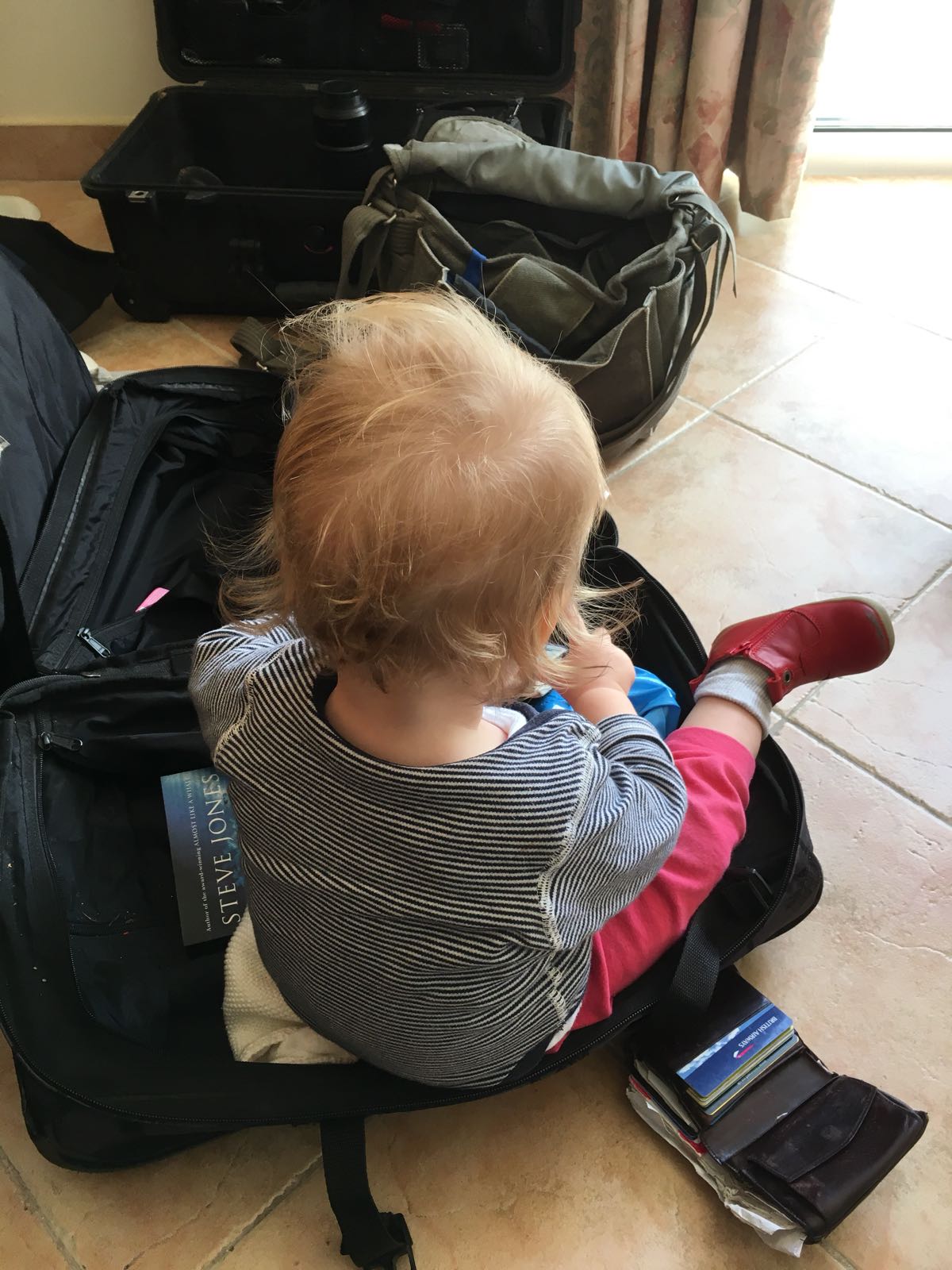
Spare outfit
Wireless bone-conducting headphones
Nappy changing mat and wallet with a nappies and wipes (plus nappy rash cream and nappy sacks if you use them)
Extra baby wipes




